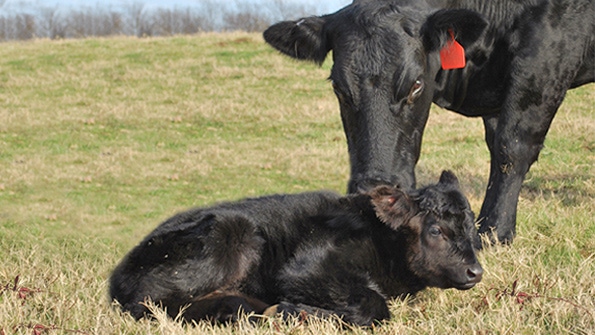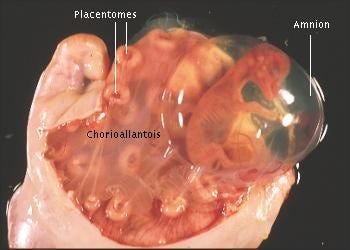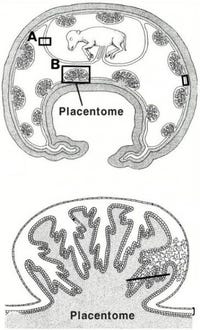Nutrition during early gestation is just as critical as during later gestation. Nutritional disruptions during pregnancy can have far reaching implications later in the calf’s life, even into adulthood.
September 16, 2016

Sponsored Content
It is easy to discount cow nutrition during early pregnancy since 75% of fetal growth occurs during the last 2 months of gestation. Oftentimes, producers tend to supplement heavily in preparation for breeding but then wait until the last half of pregnancy to focus on supplementation again. However, maternal nutrition during early pregnancy is much more important than you think. As we head into fall breeding here is some food for thought.
Fetal programming simply means that the blueprints for how an animal will perform for the rest of its life are set during fetal development. Fetal development is controlled by a complex combination of both maternal and fetal mechanisms. Intrauterine fetal growth restriction occurs when these mechanisms are disrupted. Disruptions can take the form of under or over-feeding cows during critical periods. Evidence is mounting that in-utero stunting permanently affects growth, feed efficiency, meat quality, fertility and overall health for the rest of the animal’s life. For example, steers from cows nutritionally restricted during pregnancy were observed to have reduced body weight and carcass weight at 30 months of age as compared to steers from cows fed adequately during pregnancy.
 Development during the fetal period will affect the animal's performance for the rest of its life.
Development during the fetal period will affect the animal's performance for the rest of its life.
The first few months of gestation are critical for the development of the placenta. As we all know, the placenta is the organ that surrounds and protects the developing fetus. It controls all nutrient uptake, gas exchange and waste elimination by the fetus. Crucial to the bovine placenta are the placentomes (where the maternal caruncle and placental cotyledon join). Placentomes facilitate all physiological exchanges between fetus and mother. During this critical early gestation period the number and size of placentomes are increasing as are their vascularity, which controls blood flow. Decreased blood flow between the uterus and placenta is a primary cause of intrauterine fetal growth restriction.
Placentomes are the sites where all nutrient and gas exchange occurs between mother and calf.
 Maternal nutrition directly affects development of the placentomes. Studies have shown that maternal under-nutrition or over-nutrition during this critical stage of placental development results in decreased total placentome weight, even after cow nutritional status is improved later in the pregnancy. Additionally, other studies have shown that blood flow in both the placental and maternal components of the placentomes is compromised.
Maternal nutrition directly affects development of the placentomes. Studies have shown that maternal under-nutrition or over-nutrition during this critical stage of placental development results in decreased total placentome weight, even after cow nutritional status is improved later in the pregnancy. Additionally, other studies have shown that blood flow in both the placental and maternal components of the placentomes is compromised.
Pregnancy results in increased metabolic activity (both maternal and fetal) which increases the production of oxidants. Waste oxidants can cause cell damage if not neutralized by antioxidants. Just like in human nutrition, antioxidants are very important in livestock diets. For these reasons, deficiency in antioxidant minerals (for example: selenium, copper, manganese or zinc) reduces survivability of embryos and fetuses. Studies have shown that supplementation with biologically available forms of these trace minerals improves reproductive performance, particularly in cattle that have undergone stresses in early gestation.
Early gestation is also a critical period for fetal organ development. Trace mineral status of the dam is critical because micronutrient nutrition is essential for cell growth. When cells divide, DNA is transcribed to RNA, which is then translated into proteins, which make up the structure of the cell as well as enzymes found inside. At every step of the metabolic process, trace minerals are needed as signals or catalysts. Because different organs develop at different times, deficiencies will manifest themselves differently depending on the time period when the deficiency occurs. A heartbeat is detectable as early as 21 days after ovulation. The limbs begin developing by day 25, followed by sequential development of internal organs. A calf’s sexual organs begin development within the first 45 to 60 days. This is particularly significant for a heifer calf, since she will be born with every oocyte she will ever have in her entire life. Deficiencies during organ development can have livelong results.
So what does this all mean in a practical sense? In light of what we now know about fetal programing, future strategies for optimal growth and health in cattle production will start with prenatal management. Essentially it boils down to giving your cows what they need when they need it throughout the entire pregnancy. It is clear that nutritionally restricting cows and heifers during early gestation will negatively affect fetal development. Conversely, we don’t want to overfeed during this period either, as over-conditioning also stunts fetal growth. We also know that trace mineral and vitamin nutrition during the entire pregnancy is critical. Managers should use tools such as body condition scoring and nutritional analysis of forages and commodities to balance diets to allow for precision supplementation during the various stages of pregnancy.
For more information on how CRYSTALYX® Breed-Up® self-fed supplements help cows build adequate body stores needed for calf development, lactation and rebreeding, visit www.crystalyx.com.
You might also like:
14 thoughts to help get those heifers bred
Photo Tour: World's largest vertically integrated cattle operation
You May Also Like


.png?width=300&auto=webp&quality=80&disable=upscale)
